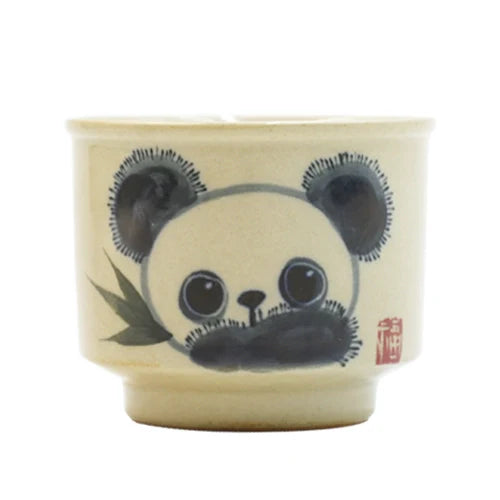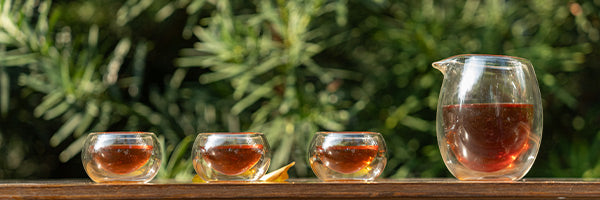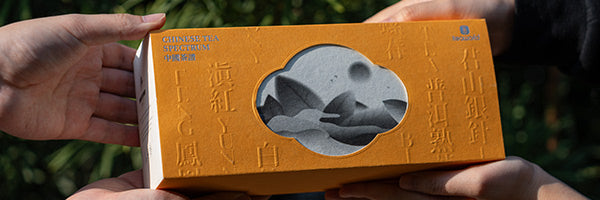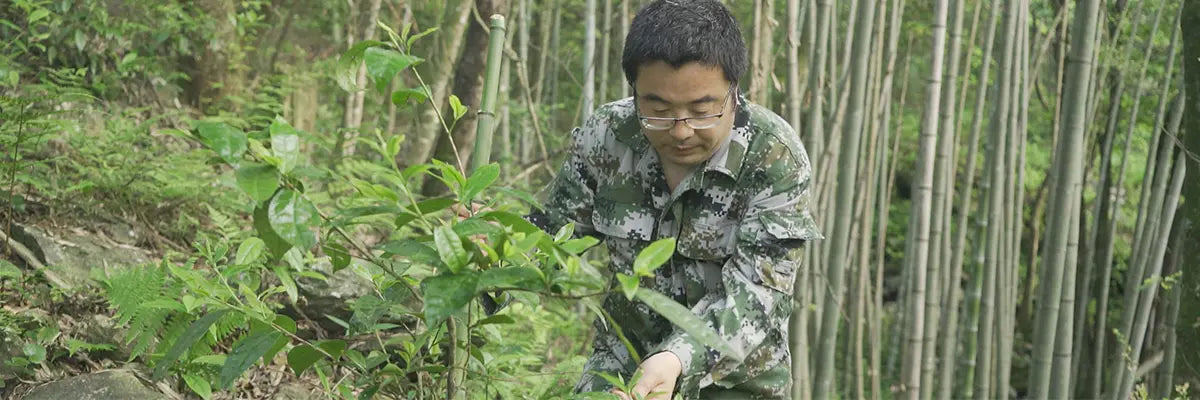Существует значительная разница в уровнях окисления различных сортов чая улун, что позволяет любителям чая выбирать улун на основе личных предпочтений. Чай улун может похвастаться многочисленными разновидностями с богатыми вкусами и ароматами, и рекомендуется исследовать и открывать для себя лучший листовой чай , который соответствует индивидуальным вкусам, с помощью пробника чая .
О чае Улун

Листовой улун появился во времена династии Мин, когда фермеры Аньси адаптировали метод производства зеленого чая к процессу приготовления улуна. Сначала он распространился в северных провинциях Фуцзянь и Гуандун, а затем достиг Тайваня, где приобрел широкую популярность.
Чай улун относится к категории полуокисленного чая, с уровнем окисления между листовым зеленым чаем и листовым черным чаем . Среди основных категорий чая Китая чай улун выделяется как особый и высококачественный чай. Чай улун проходит такие процессы, как завяливание, скручивание, встряхивание, полуокисление и выпечка, чтобы получить исключительный чай. Чай улун имеет уникальные методы заваривания, и различные техники заваривания могут привести к различным вкусам. Чай улун также известен как «чай для похудения» или «чай красоты» и пользуется большой популярностью у любителей чая.
Существует большое разнообразие чаев улун, в том числе Те Гуаньинь, Шуй Сянь, Мао Се, Уи Рок Чай, Дун Дин Улун, Жугуй, Ци Лан, Луохан Чен Сян, Фэнхуан Шуйсянь, Линтоу Даньцун и многие другие.
Какова степень окисления чая улун?
Окисление относится к реакции окисления, которая происходит, когда чайные листья вступают в контакт с кислородом воздуха. Степень окисления — это степень, в которой чайные листья окисляются.По степени окисления улун обычно подразделяется на слабоокисленный чай (примерно 10–25%), умеренно окислённый чай (примерно 25–50%) и сильно окислённый чай (примерно 50–70%).
Различные улуны, на которые влияют сорта чайных деревьев и процессы производства, демонстрируют различные качественные характеристики. Например, слабоокисленные чаи напоминают зеленый чай и имеют легкий аромат, в то время как умеренно окисленные чаи имеют более выраженный аромат, а сильно окисленные чаи напоминают черный чай с медовым ароматом. Чтобы оценить эти различия, лучше всего лично попробовать и поэкспериментировать. Изучите листовой чай iTeaworld , который предлагает множество высококачественных и экономичных вариантов улуна, которые стоит попробовать.
Слабоокисленный чай улун

Слабоокисленный чай улун имеет уровень окисления приблизительно 10–25%, типичными примерами являются чай Вэньшань Пушонг и ароматный Те Гуань Инь .
Чай Вэньшань Пучонг имеет самую легкую степень окисления среди улунских чаев, напоминающих зеленый чай, но с уникальной индивидуальностью. Его внешний вид похож на скрученные полоски, с блестящим зеленым цветом. Настой имеет медово-зеленый, яркий оттенок, а аромат чистый и элегантный, напоминающий цветочный аромат. Вкус сладкий и мягкий, освежающий, с хорошей терпкостью и сильным послевкусием.
Слабоароматный ТеГуаньинь, представитель слабоокисленного улуна, имеет немного более высокий уровень окисления, чем Вэньшань Пушонг. Его характеристика - "прозрачный суп, зеленая вода", что указывает на прозрачный и яркий чайный суп. По сравнению с традиционными чаями Фуцзянь улун с внешним видом "зеленый лист красной каймы", слабоароматный ТеГуаньинь имеет очевидные характеристики "трех зеленых": зеленые сухие листья, зеленый чайный суп и зеленая листовая основа. После заваривания аромат стойкий, чайный суп яркий и прозрачный, вкус освежающий, гладкий, с сильным послевкусием и нежным цветочным возвратом.
Умеренно окисленный чай улун

Умеренно окисленный улун имеет уровень окисления приблизительно 25%–50%. Большинство улунских чаев попадают в эту категорию, например, традиционные крепкие ароматные Те Гуань Инь и Фэнхуан Даньцун и другие. Разница во внешнем виде и вкусе между умеренно окисленным улунским чаем и слабо окисленным улунским чаем значительна, привлекая потребителей своими уникальными качествами.
Традиционный крепкий аромат Те Гуань Инь, также известный как «запеченный чай», запекается на углях, придавая ему естественный дымный аромат. Сухой чай имеет плотно скрученные, темные и блестящие полоски с глубоким ароматом древесного угля. Чайный настой имеет чистый и ровный аромат, оранжево-желтый полупрозрачный цвет, богатый и мягкий вкус и длительное послевкусие. Листья толстые, мягкие и блестящие, имеют хорошо организованный вид, не ломаясь легко.
Fenghuang Dancong имеет хорошо организованный и прямой сухой чай, желто-коричневого цвета и блестящего внешнего вида, демонстрирующий красные точки, похожие на киноварь. После заваривания он имеет длительный аромат с уникальным натуральным ароматом орхидеи. Вкус насыщенный, мягкий и освежающий, с мягким ощущением в горле и длительным послевкусием. Чайный настой прозрачно-янтарного цвета, а край листьев красный, что дало ему название «зеленый лист с красной каймой», демонстрируя уникальное горное очарование.
Сильно окисленный чай улун

Сильно окисленный чай улун имеет уровень окисления приблизительно 50–70%, к его представителям относятся Да Хун Пао и Бай Хао Улун.
Da Hong Pao имеет плотно скрученные полоски с зеленовато-коричневым и блестящим внешним видом. После заваривания чайный настой приобретает яркий оранжево-желтый цвет, а листья демонстрируют красивое красно-зеленое взаимодействие, представляя типичную красоту «зеленого листа с красной каймой». Самая выдающаяся особенность Da Hong Pao — его насыщенный и стойкий аромат, напоминающий орхидеи, с ярко выраженным «каменным очарованием». Da Hong Pao очень долговечен, сохраняя свой аромат даже после семи или восьми завариваний.
Bai Hao Oolong, уникальный для Тайваня, можно считать самым сильно окисленным чаем среди улунов и зеленых чаев. Ветви и листья соединены, и виден белый пушок, что дало ему название Bai Hao Oolong или «Чай восточной красоты». С разноцветным внешним видом, напоминающим цветок, чайный настой янтарного цвета, яркий и прозрачный. Он имеет медовый или спелый фруктовый аромат с заметной и продолжительной сладостью. Вкус сладкий, свежий и мягкий.
Различные улуны, на которые влияют сорта чайных деревьев и процессы производства, демонстрируют различные качественные характеристики. Любители чая могут выбрать любимый улун в зависимости от своих предпочтений, наслаждаясь глотком и испытывая завораживающее царство «еще не вкусив росы, но сначала почувствовав божественный аромат», как это делали древние.







































































